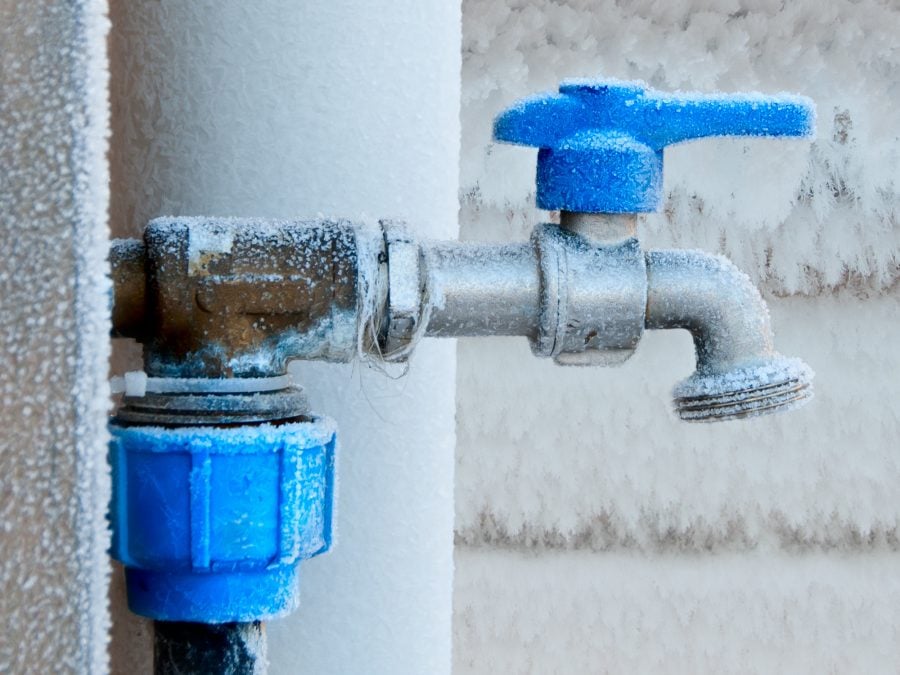Essential Tips to Prevent Frozen Plumbing in Winter: Professional Insights
Essential Tips to Prevent Frozen Plumbing in Winter: Professional Insights
Blog Article
What are your concepts about How to Prevent Your Pipes From Freezing?

Cold weather can ruin your plumbing, particularly by freezing pipes. Here's exactly how to stop it from taking place and what to do if it does.
Intro
As temperatures decline, the threat of frozen pipelines boosts, potentially bring about expensive repair work and water damage. Recognizing how to avoid frozen pipes is vital for property owners in cool climates.
Recognizing Frozen Pipes
What creates pipes to freeze?
Pipes freeze when revealed to temperatures listed below 32 ° F (0 ° C) for expanded periods. As water inside the pipes freezes, it broadens, taxing the pipeline wall surfaces and possibly causing them to burst.
Dangers and problems
Icy pipelines can lead to supply of water disturbances, property damage, and costly repair services. Ruptured pipelines can flood homes and trigger comprehensive structural damages.
Indicators of Frozen Water Lines
Identifying frozen pipes early can prevent them from bursting.
Just how to determine frozen pipes
Try to find decreased water circulation from taps, uncommon odors or sounds from pipelines, and visible frost on subjected pipelines.
Avoidance Tips
Protecting susceptible pipelines
Wrap pipelines in insulation sleeves or use warm tape to protect them from freezing temperature levels. Focus on pipes in unheated or external locations of the home.
Heating methods
Maintain indoor spaces adequately heated, especially areas with pipes. Open up closet doors to permit warm air to circulate around pipes under sinks.
Safeguarding Outside Plumbing
Garden hoses and outdoor faucets
Disconnect and drain yard tubes prior to winter months. Mount frost-proof faucets or cover outside taps with shielded caps.
What to Do If Your Pipelines Freeze
Immediate actions to take
If you think frozen pipelines, maintain faucets open up to relieve stress as the ice thaws. Utilize a hairdryer or towels soaked in warm water to thaw pipes slowly.
Long-Term Solutions
Architectural adjustments
Take into consideration rerouting pipelines away from outside wall surfaces or unheated areas. Include added insulation to attics, basements, and crawl spaces.
Upgrading insulation
Purchase high-grade insulation for pipelines, attic rooms, and wall surfaces. Appropriate insulation aids preserve consistent temperature levels and decreases the threat of frozen pipes.
Verdict
Avoiding icy pipelines requires proactive procedures and fast actions. By recognizing the reasons, signs, and preventive measures, house owners can shield their pipes throughout winter.
5 Ways to Prevent Frozen Pipes
Drain Outdoor Faucets and Disconnect Hoses
First, close the shut-off valve that controls the flow of water in the pipe to your outdoor faucet. Then, head outside to disconnect and drain your hose and open the outdoor faucet to allow the water to completely drain out of the line. Turn off the faucet when done. Finally, head back to the shut-off valve and drain the remaining water inside the pipe into a bucket or container. Additionally, if you have a home irrigation system, you should consider hiring an expert to clear the system of water each year.
Insulate Pipes
One of the best and most cost-effective methods for preventing frozen water pipes is to wrap your pipes with insulation. This is especially important for areas in your home that aren’t exposed to heat, such as an attic. We suggest using foam sleeves, which can typically be found at your local hardware store.
Keep Heat Running at 65
Your pipes are located inside your walls, and the temperature there is much colder than the rest of the house. To prevent your pipes from freezing, The Insurance Information Institute suggests that you keep your home heated to at least 65 degrees, even when traveling. You may want to invest in smart devices that can keep an eye on the temperature in your home while you’re away.
Leave Water Dripping
Moving water — even a small trickle — can prevent ice from forming inside your pipes. When freezing temps are imminent, start a drip of water from all faucets that serve exposed pipes. Leaving a few faucets running will also help relieve pressure inside the pipes and help prevent a rupture if the water inside freezes.
Open Cupboard Doors
Warm your kitchen and bathroom pipes by opening cupboards and vanities. You should also leave your interior doors ajar to help warm air circulate evenly throughout your home.

I stumbled upon that blog entry on 6 Ways to Prevent Frozen Pipes when doing a lookup on the search engines. Those who enjoyed our post if you please do not forget to share it. Thanks a bunch for your time. Revisit us soon.
Request Your Service Report this page